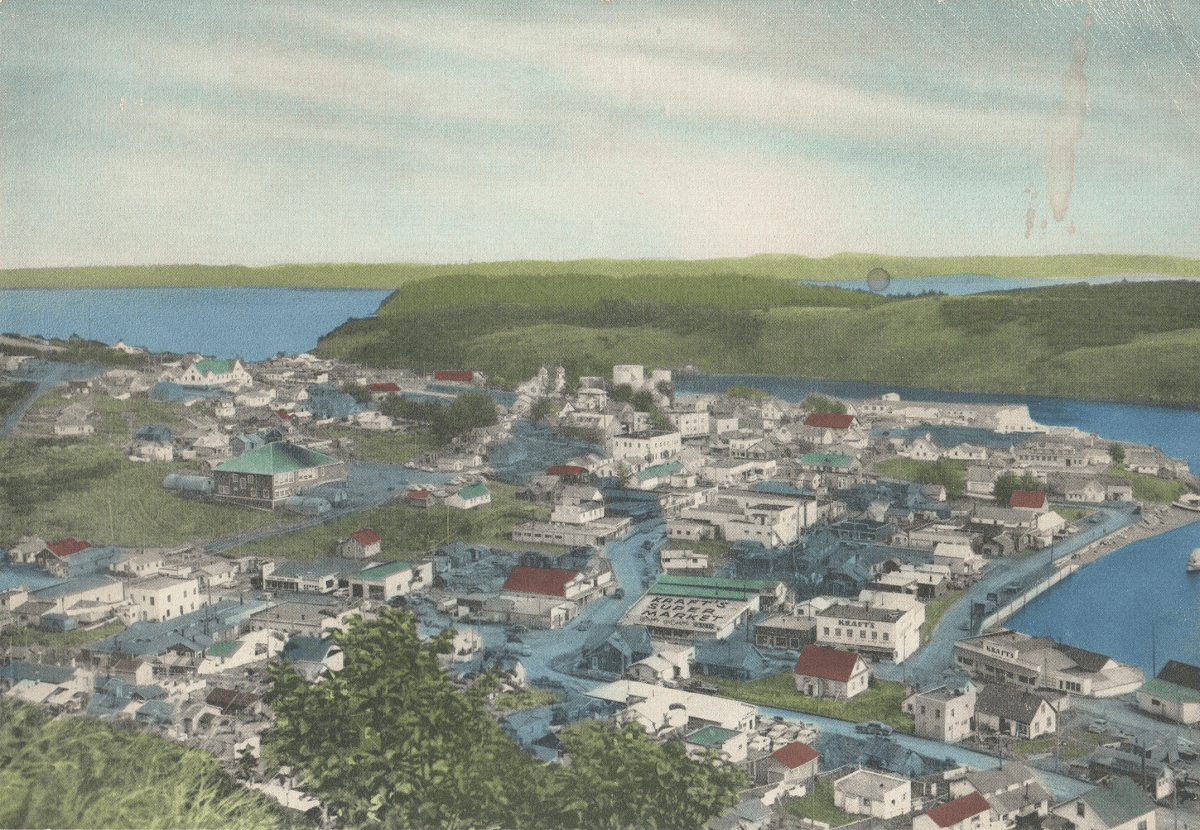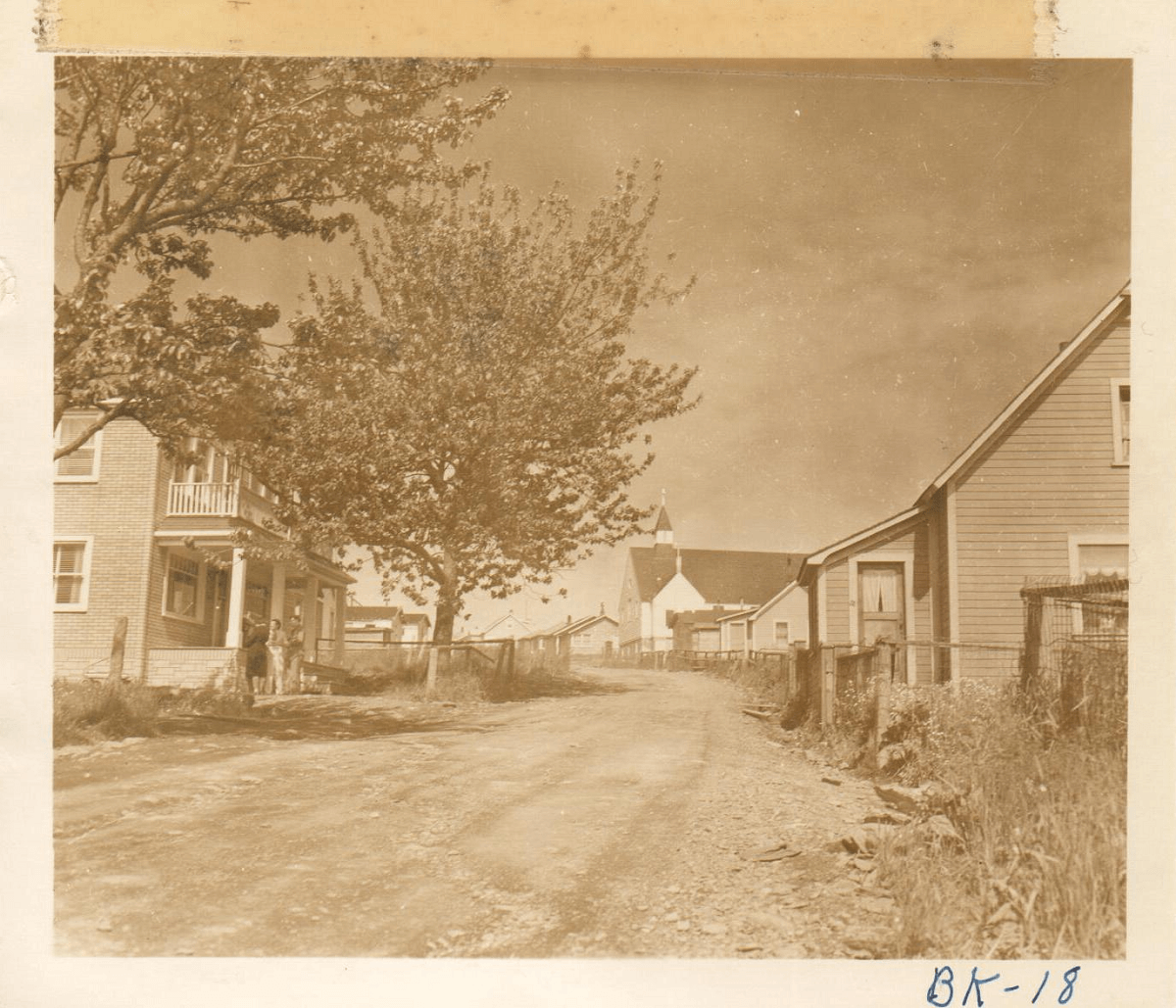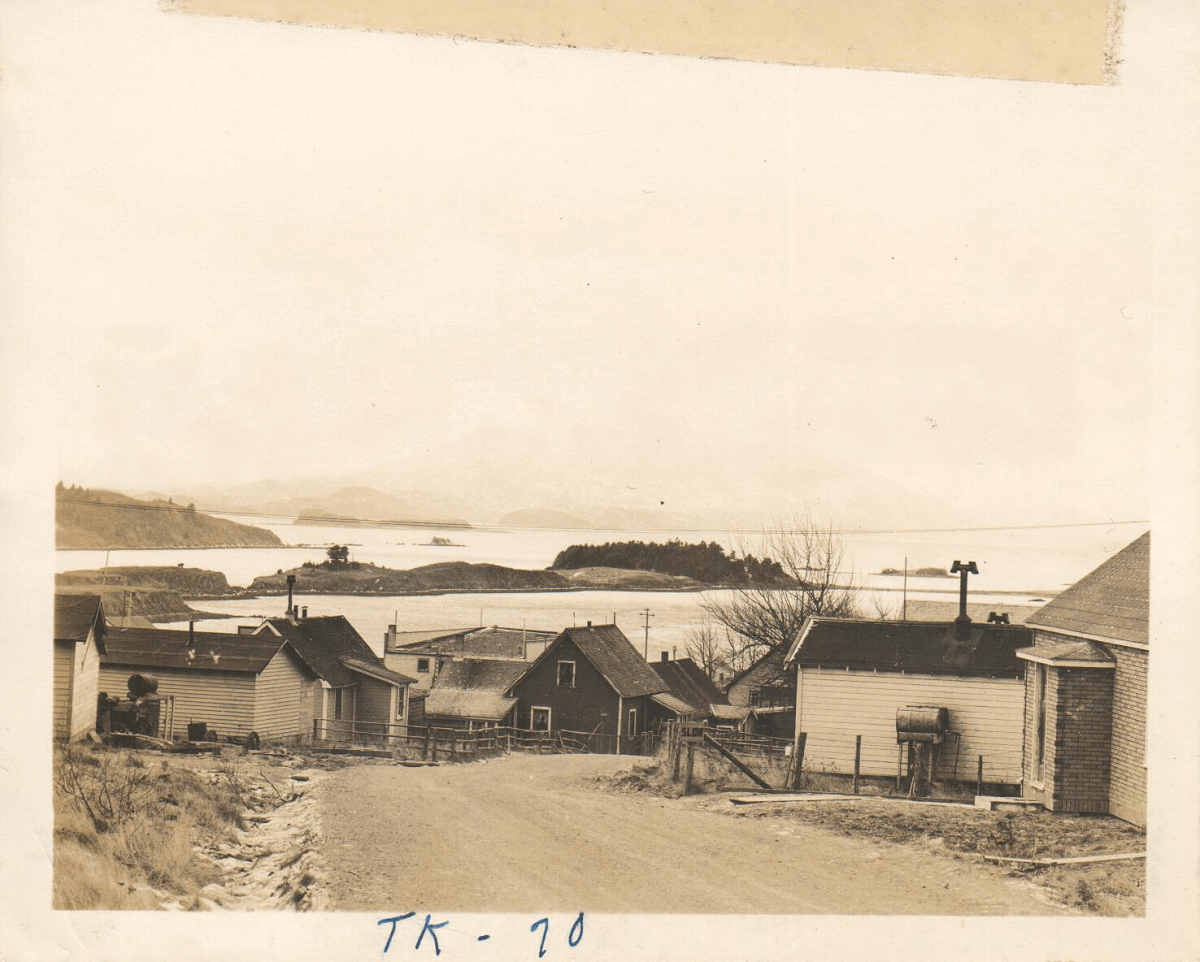Chapter 2: The Earthquake
Listen to Kodiak residents describe their experiences of the 1964 Great Alaska Earthquake.

Kodiak residents enjoyed calm seas and clear skies on March 27, 1964. It was Good Friday, the beginning of the Easter holiday, and by late afternoon most island residents had begun to relax and ease into the long weekend. They had no clue that the next day Kodiak as they knew it would be gone.
This color-enhanced B&W photo of Kodiak prior to the 1964 earthquake includes familiar landmarks such as the massive oil tanks near the Russian Orthodox Church and many buildings long gone such as the hip-roofed schoolhouse and three stores owned by Otto Kraft.
Leif J. Norman photo courtesy of Nancy Norman Sweeney

As the ground began to shake at 5:36 p.m. most people were in the midst of preparing dinner. Ground tremors were not unusual so people gave it little thought. When 30 seconds had passed and the violent shaking continued they realized that everything about this earthquake – the sound, the intensity, the duration – was different. And they were right. It was a record-breaker. The magnitude 9.2 earthquake, known as the 1964 Great Alaska Earthquake, to this day is the largest earthquake recorded in North America and second largest ever recorded in the world.
Narrow Mill Bay Road climbs the hill north of downtown Kodiak with the Madsen home on the left, the Heglin’s home on the right and the Community Baptist Church at the top of the hill in old Kodiak. The church, with its expansive green roof, stands in the same location today.
Leif J. Norman photo courtesy of Nancy Norman Sweeney
“It was so intense, the waves on the ground. It was like waves on the ocean rolling through the ground here … I came out of that store and tried running up to home … you couldn’t even begin to run. It was just impossible.” ~ Sonny Chichenoff

Kodiak residents readily recall what they saw and heard while the earth shook for five long minutes: giant spruce trees bending like fishing poles, the deafening sounds of the earth moving, the ground rising and falling like three-foot waves in an ocean swell. It is no wonder the 1964 earthquake was such an astonishing, unforgettable experience for Kodiak residents. As the earth shook, the very ground they stood upon – the northeast end of Kodiak Island – tipped and sank nearly six feet.
Houses huddle atop the hill on Mill Bay Road overlooking downtown Kodiak and St. Paul Harbor, a safe distance from the devastating aftermath of the tsunami.
Leif J. Norman photo courtesy of Nancy Norman Sweeney
